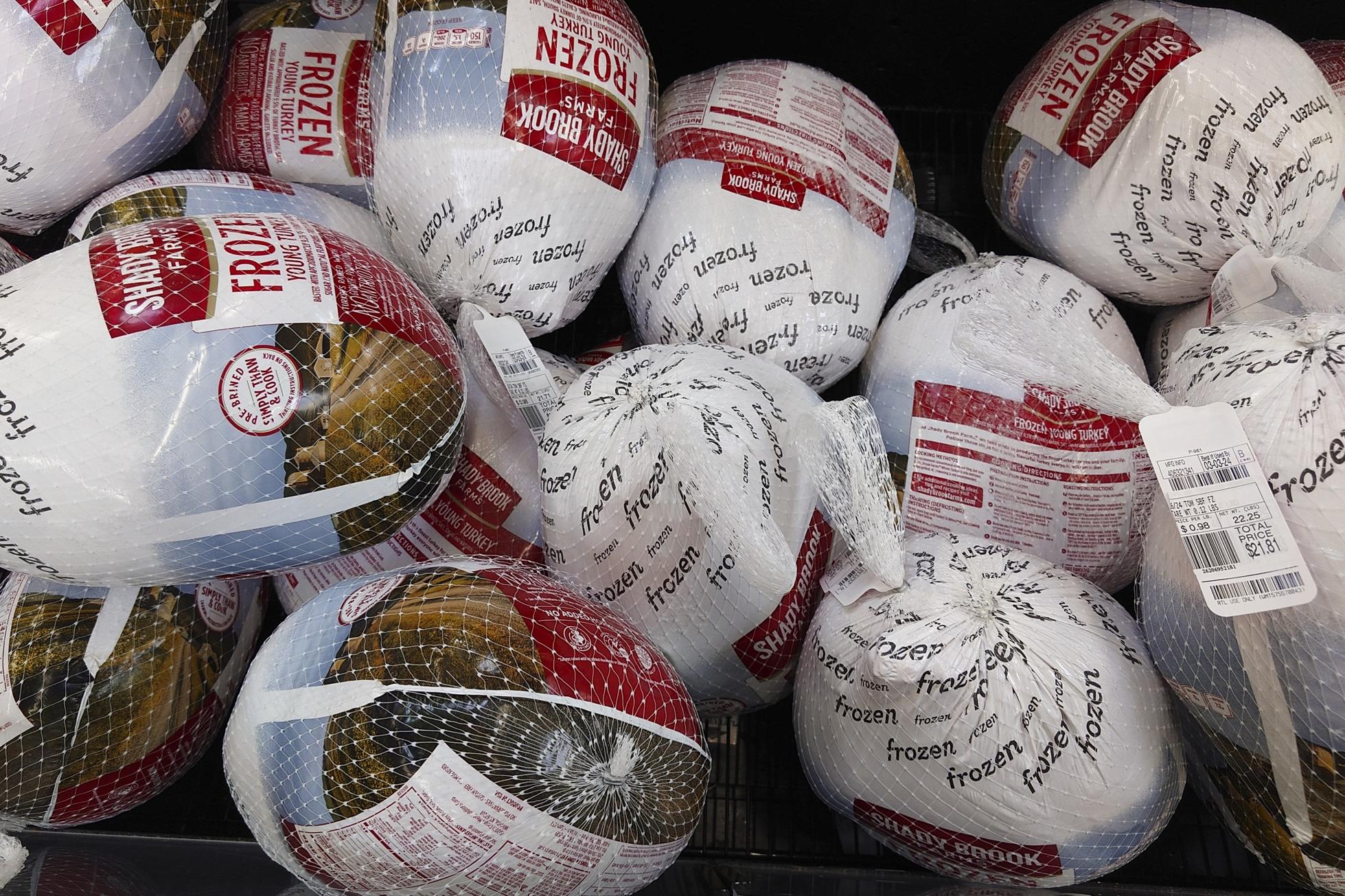A single agri-business behemoth dominates the Thanksgiving-industrial complex.
By Chloe Sorvino, Forbes Staff
There’s hardly a forkful of Thanksgiving that doesn’t involve agri-business giant Cargill, America’s biggest privately held company.
Cargill makes key ingredients in gravy, cranberry sauce, packaged dinner rolls, cornbread mix and marshmallows for the sweet potatoes. It manufactures the vegetable oils used to roast potatoes and crisp turkey skin. Cargill owns Diamond Crystal, the country’s largest salt producer. Pies and the after-dinner coffee get sweetened with Cargill’s sugar alternative, Truvia. Even the candles on the table may be made from Cargill’s vegetable wax.
As the centerpiece of the Thanksgiving-industrial complex, Cargill also brings America the star of the show. The Minneapolis-based behemoth says it supplies one-third of the 40 million turkeys scheduled for devouring on Thursday.
“There’s not too many ingredients we don’t play in,” Tom Windish, who heads up Cargill’s primary beef and turkey businesses, tells Forbes. “We could be in your macaroni and cheese. It won’t say Cargill on the box, but we’re part of many supply chains. We’re in that meal somewhere, whether it’s the feed or the center of the plate.”
Cargill turkeys.
AP Photo/Matt Rourke
Cargill has been in the turkey business for six decades, rising to be the third-biggest producer in the U.S. behind Seaboard-owned Butterball and Hormel’s Jennie-O. Roughly 900 million pounds of turkey come from Cargill each year, and the birds are a significant part of Cargill’s North America protein division’s $28 billion in annual sales. (Cargill had total revenue of $177 billion during its last fiscal year, which ended in May.) Turkey is one of Cargill’s more profitable businesses, buttressing the fortunes of the 12 individual billionaires who inherited stakes in the family company.
Company History
Cargill started out as a grain warehouse in a frontier boom town in Iowa in 1865, just two years after Abraham Lincoln called for a national day of thanksgiving on the last Thursday of November. Cargill has been a holiday powerhouse ever since.
It wasn’t until a century later that the company got into turkey production. Cargill bought a processing plant in Ozark, Arkansas in 1967, adding turkey brand Honeysuckle White as it was diversifying into oilseeds, salt mining and beef processing. With the 2001 acquisition of Rocco Foods came turkey slaughterhouses in Virginia and Cargill’s second turkey brand, Shady Brook Farms. Together, the two labels account for half the Cargill turkeys sold in the U.S. The rest are sold as stores’ in-house brands.
The 158-year-old company, which sells birds raised by more than 550 farmers, may have the scale to eventually beat out its two bigger, publicly traded turkey competitors. Butterball owner Seaboard has been challenged for years. Jennie-O, meanwhile, has been one of the biggest drivers of operating profit declines at Hormel this year, according to Goldman Sachs agribusiness and packaging analyst Adam Samuelson. Hormel recently has had to cut its financial outlook twice and this year stopped reporting results of Jennie-O separately.
Avian Flu
Jennie-O is among the producers that has been most affected by the country’s worst-ever outbreak of bird flu, with sales volume dropping 27% in the second half of 2022. The flu staged a comeback in September and October, pushing the turkey industry back to high alert. New outbreaks have just hit 12 states.
“We’re seeing a volume recovery in our supply chain and continue to see turkey as a long-term key category for our business,” a Jennie-O spokesperson tells Forbes.
Hormel “virtually ignored” Jennie-O’s turkey production when discussing its financial results with analysts, Samuelson says. “It’s not performing,” he says. “It’s not contributing at the level of profitability that they cast at the start of the year.”
A Hormel spokesperson said that turkey “remains a very important part of our overall business and the Jennie-O brand is a very strategic part of our overall portfolio. We remain a leader in the ground-turkey category at retail and possess a large presence in the foodservice channel.”
By contrast, only about half a percent of Butterball’s contracted supply needed to be culled after outbreaks on its farms last year. Cargill hasn’t been affected.
“The recent avian influenza outbreaks are a rapidly evolving, industrywide challenge that the company is monitoring closely,” Butterball spokesperson Christa Leupen tells Forbes.
This Thanksgiving, consumers care most about turkey size, price and brand, in that order, according to Cargill’s annual Thanksgiving purchasing survey, which had 5,000 respondents. The survey helps Cargill decide what kinds of turkeys to raise. Since more than 80% said that they plan to put a whole bird on the table, and large turkeys of more than 16 pounds were reported to be most popular this year, Cargill went all-out. About two-thirds of consumers said they would opt for a frozen turkey over fresh.
“Working year-round making sure all the logistics are right,” says Cargill’s Windish. “It’s a big logistical dance. It’s frantic at times. We’re preparing for the big holiday.”

